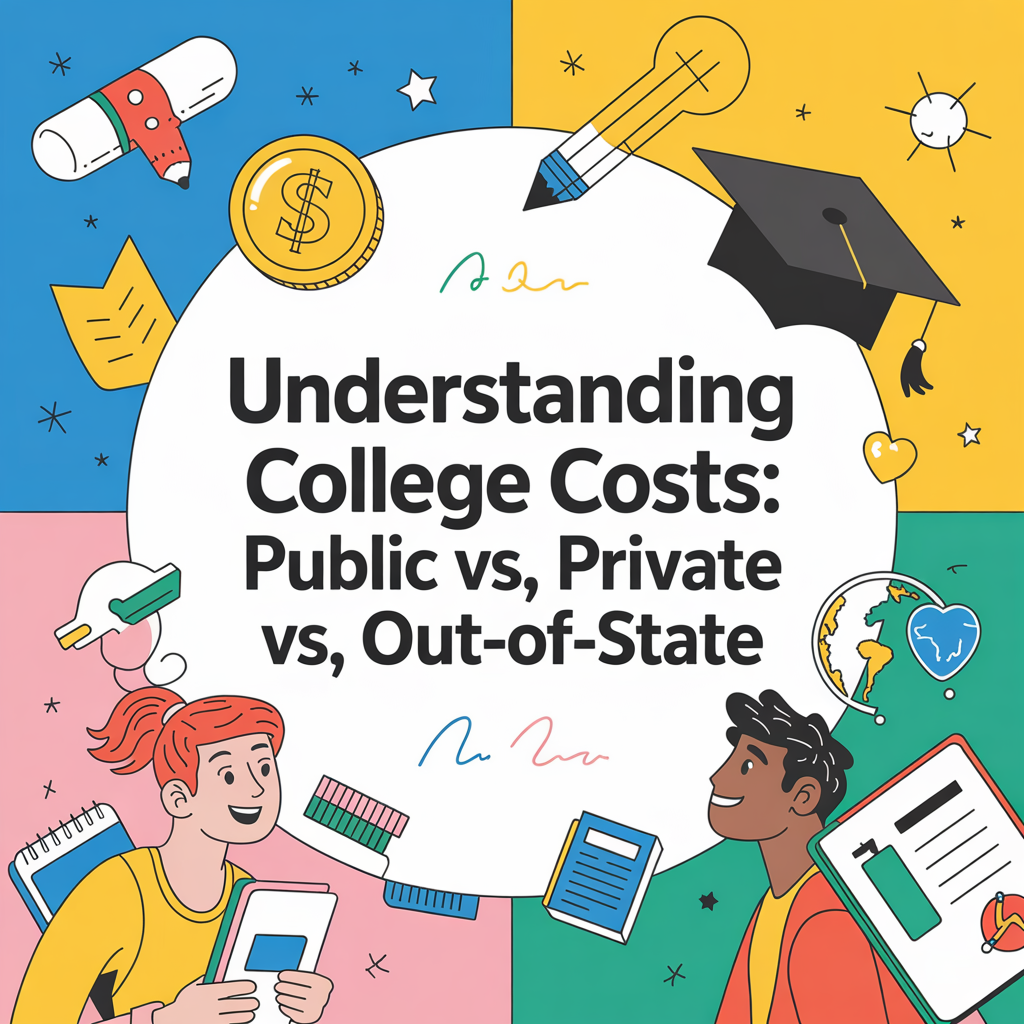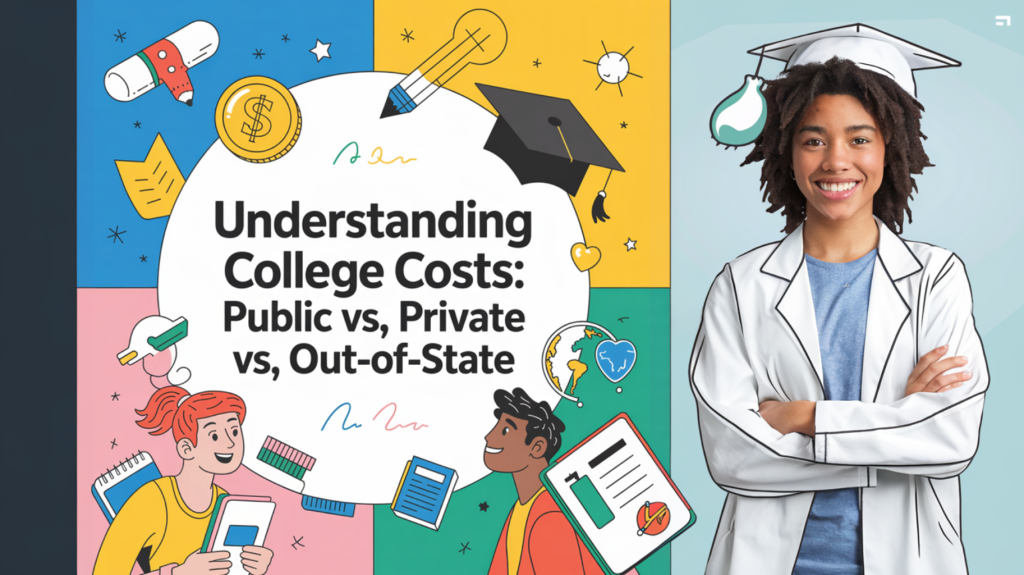Understanding College Costs: Public vs. Private vs. Out-of-State (Which is Really More Affordable After Aid?)

Understanding college costs can be tricky. The public vs private college cost difference seems big. What about out of state tuition? This article explains how to use net price comparison. Find out what’s really affordable.

The “Sticker Price” Isn’t the Whole Story
The “sticker price” is the listed tuition and fees. But most students don’t pay that amount. Financial aid can lower the cost. It’s important to look beyond the sticker price.
Platforms like Cirkled in can be invaluable resources for students seeking scholarships and financial aid opportunities, helping them see the real cost of their education.
Public Colleges: In-State vs. Out-of-State
Public colleges are state-funded. They offer lower tuition to state residents.
In-State Tuition Advantages
- Much lower cost than out of state tuition.
- Easier access to state grants.
- Closer to home.
Going to an in-state school can really help save money.
Out-of-State Tuition Considerations
- Higher tuition (often much higher).
- Fewer state grant options.
- May be worth it for specialized programs.
The out of state tuition can still be affordable, depending on the financial aid package.
Private Colleges: The (Often Misunderstood) Cost
Private colleges don’t get state funding. Their sticker price is often higher than public schools. But they also have more financial aid to give.
- Higher Tuition = More Aid?: They may offer more grants and scholarships.
- Need-Based Aid: Private colleges are often generous with need-based aid.
- Merit-Based Aid: They may offer scholarships for academic or talent.
Many students find private colleges affordable after financial aid.
Understanding “Net Price Comparison”
Net price comparison shows the real cost after aid.
- Net Price = Sticker Price – Grants – Scholarships
- Use the Net Price Calculator: Most colleges have this on their website.
- Compare Offers: Look at the net price from different schools.
This shows your true cost of college, so you can start to see what schools are truly possible. Cirkled in can help students showcase their achievements and connect with potential scholarship providers, further enhancing their ability to afford in-state tuition.
Types of Financial Aid: Grants, Scholarships & More
- Grants: Need-based aid that doesn’t need to be repaid. (Pell Grants, State Grants)
- Scholarships: Merit-based or need-based aid. Also doesn’t need to be repaid.
- Loans: Borrowed money that needs to be repaid with interest. (Federal Loans, Private Loans)
- Work-Study: Part-time job on campus.
The types of college financial aid really impact the bottom line.
Making the Right Financial Decision
- Fill out the FAFSA to determine need-based aid.
- Search for scholarships to offset any costs.
- Consider long-term debt.
- Choose a college that fits your budget and goals.
College is an investment. Make it a smart one!
Conclusion: College Costs: Public, Private, or Out-of-State?
Understanding college costs takes research. Don’t just look at the sticker price. Compare public vs private college cost using net price comparison. Factor in out of state tuition. Then, choose the college that’s the best financial fit for you.
Need more tips on college applications, scholarships, or just how to survive this whole process? Cirkled In has your back—check out Cirkled In resources to help you through every step of your college journey!



0 Comments